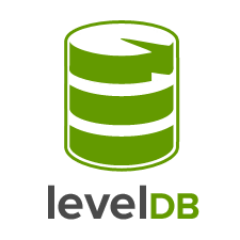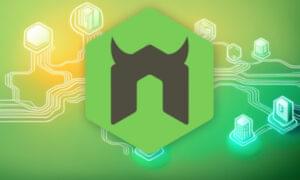
Typically when you set out with a Rails application, your data lives inside a MySQL (or PostgreSQL, or SQLite, or Oracle) database. But, it turns out that the traditional relational database is not a great fit for all types of data. For example, if you want very fast access to data that isn’t flushed to disk all that often, you could hold that information in RAM. In this case, you might want Redis or Memcached. If your data can be represented as a graph, you’ll want to check out Neo4j or OrientDB. But sometimes, you don’t want or need a full-blown database server; instead, you can make do with a simple library that can be packaged along with your app. This is where LevelDB fits in: it is a key-value storage library that’s meant to be fast.
In this article, we’ll cover how to use LevelDB with a Ruby wrapper and also discuss where you should and shouldn’t use LevelDB by presenting common use cases.
Why Not a Hash?
LevelDB is a key-value storage library, meaning you can associate string keys and string values which can be queried later. Wait a second – isn’t that like a Ruby hash? What’s the point of adding on another dependency if Ruby already has what we want? It turns out that Ruby’s hash can’t really be used as a on-disk key-value store.
First of all, the LevelDB “hash” is stored in a database file instead of being held in memory. So, when your app ends/crashes, you will still be able to access LevelDB data when the app restarts. In addition, LevelDB includes tools to deal with problems that could and probably will occur. First of all, there’s all sorts of things that can go wrong when you try to write to a database. LevelDB lets you know if something goes wrong.
It also lets us apply updates to the key-value store atomically. Basically, with an atomic update, either the whole update completes or none of it does (we’ll see an example shortly). Another great feature is fully synchronous writes, meaning updates to the key-value store don’t return until it has actually written them to the underlying device (e.g. a hard drive). We can construct a system that can’t have lost more than the updates it was working on at the instant that a crash occurs.
LevelDB gives us some automatic synchronization. If we have two threads accessing the same database, for some operations, LevelDB will make sure that we don’t run into a problem by trying to access or modify the database at the same time. Finally, there’s also all sorts of performance benefits that LevelDB gives us.
Taken as a whole, it is obvious that there’s a lot more to key-value stores than just taking a hash and serializing it. We always have to think about failure and, most of the time, concurrency. LevelDB takes all this complexity and lets us think about the key-value store as a simple hash and that’s what makes it awesome.
LevelDB-Ruby Basics
LevelDB’s “default” API is in C++, but thankfully, someone’s written us Rubyists a binding! Before we can install it, we need a copy of the native library. The installation depends on what platform you’re on (or you can just compile from source). If you’re on Mac OS X with Homebrew, you can run:
brew install leveldbIf you are on a Debian-derivative system (e.g. Ubuntu):
sudo apt-get install leveldbNow we can install the gem:
gem install leveldb-rubyUnfortunately, the gem is a bit old and lacking a few features, but it is pretty useful nonetheless. Let’s jump right in with a simple example:
require 'leveldb'
db = LevelDB::DB.new("my-database.db")
db.put "dhaivat", "pandya"First, create a LevelDB database (which is actually created as a directory with a bunch of files inside it) and associate the key “dhaivat” with the value “pandya”. We can get values out of the “hash” just as easily:
db.get "dhaivat"The binding makes our life even easier by allowing us to use the standard hash syntax on the LevelDB database:
db["dhaivat"] = "pandya"
p db["dhaivat"]We also get a pretty useful utility method called contains? that tells us whether or not the database contains a given key:
db.includes?("dhaivat") => trueWe can get the keys and values just as easily:
db.keys
db.valuesIteration
Underneath the hood, LevelDB can be approximated as a very efficient implementation of a data structure called a “B+Tree”. This means that the Hash that LevelDB represents is an ordered one. In other words, each key-value pair is sorted according to a specific rule, whereas the Ruby Hash provides no such guarantee of ordering. By default, LevelDB orders the pairs by alphabetically ordering the keys, so we can iterate over them in that order:
db.each do |key, value|
puts "#{key}, #{value}"
endWe can even map over the database just as we would for a regular Ruby hash:
db.map do |key, value|
[key, " #{value} "]
endAtomicity
So far, we’ve just been stringing together some pretty simple operations without thinking much about what would happen if one of them were to fail. Let’s take a look at this scenario:
db.put "fred", "smith"
db.put "john", db["fred"]
db.delete "fred"What if we somehow fail just before deleting “fred”? That would mean that the value “smith” is now associated with both “fred” and “john”. In many cases, this sort of intermediary case can ruin your business logic. Instead, we need a way to make sure that either all three operations complete or none of them do. We need atomicity.
LevelDB provides the concept of a “WriteBatch” to do this. Take all of the operations and stuff them into into a WriteBatch. Generally, they are executed as an atomic operation. Here’s an example:
db.batch do |b|
b.put "fred", "smith"
b.put "john", b['fred']
b.delete "fred"
endThis ensures that all three of our operations will run as a transaction. Either all operations complete or none of them do. But, the call, by default, is asynchronous, meaning that the database has not necessarily synced to the file when the call returns. Fortunately, there’s a simple way to make it a synchronous transaction:
db.batch, :sync => true do |b|
b.put "fred", "smith"
b.put "john", b['fred']
b.delete "fred"
endUse Cases
Alright, so we now have a basic handle on LevelDB. It almost seems too easy, but that’s where LevelDB shines. It hides all of the complicated optimizations, algorithms, and the like to make it seem as if you’re just accessing a weird, little Ruby Hash.
But, when should you use it?
The first thing to understand very clearly is that LevelDB is not a database server. There is no server involved. It is just a library. This gives it a pretty tremendous advantage: you don’t need to know about the deployment target’s setup in order to handle data on the disk in an efficient manner. So, if you’re writing an application that runs in an environment that may not already have Postgres or MySQL ready to go, LevelDB is definitely something to consider. For example, LevelDB is often used on the client side with Javascript because there’s no good equivalent of a relational database available.
One might think that a good reason not to use LevelDB would be if you have anything more complicated than a simple key-value relationship. Fortunately, this is not the case. With a little bit of thought, it is possible to use the key-value store in order to create much more complicated relationships within your data. Another major benefit of LevelDB is that it is pretty low level, so you know exactly how much time (at least, asymptotically) queries and actions will take. Thus, you can create your own abstractions on top of LevelDB that provide specific trade-offs.
Wrapping It Up
I hope you’ve enjoyed this tour of LevelDB through Ruby. If you have any questions, drop them in the comments below!
Frequently Asked Questions about LevelDB and Ruby
What is LevelDB and how does it work with Ruby?
LevelDB is a fast key-value storage library developed by Google that provides an ordered mapping from string keys to string values. It’s designed to handle large amounts of data and to provide high-speed random access. When it comes to Ruby, LevelDB can be used as a persistent storage option for Ruby applications. Ruby has a gem called ‘leveldb-ruby’ that provides a simple and easy-to-use interface to LevelDB. This gem allows Ruby developers to interact with LevelDB databases, perform CRUD operations, and manage database transactions.
How do I install the LevelDB library for Ruby?
To install the LevelDB library for Ruby, you need to install the ‘leveldb-ruby’ gem. You can do this by running the command ‘gem install leveldb-ruby’ in your terminal. This will download and install the gem, along with any dependencies it needs. Once the gem is installed, you can require it in your Ruby code with ‘require ‘leveldb” and start using LevelDB in your Ruby applications.
How can I perform CRUD operations in LevelDB using Ruby?
CRUD operations in LevelDB using Ruby are straightforward. The ‘leveldb-ruby’ gem provides methods for creating, reading, updating, and deleting data. For example, to create or update data, you can use the ‘[]=’ method. To read data, you can use the ‘[]’ method. And to delete data, you can use the ‘delete’ method. These methods work with string keys and values, and they provide a simple and intuitive interface to LevelDB.
How can I manage database transactions in LevelDB using Ruby?
LevelDB supports atomic batch updates, which can be used to manage database transactions. The ‘leveldb-ruby’ gem provides a ‘batch’ method that you can use to perform multiple operations atomically. This means that either all the operations succeed, or none of them do. This is useful for ensuring data consistency and integrity.
What are the advantages of using LevelDB with Ruby?
LevelDB provides several advantages when used with Ruby. First, it’s a fast and efficient key-value storage library, which makes it suitable for handling large amounts of data. Second, it provides an ordered mapping from string keys to string values, which can be useful for certain types of data. Third, it supports atomic batch updates, which can help ensure data consistency and integrity. And finally, the ‘leveldb-ruby’ gem provides a simple and intuitive interface to LevelDB, making it easy to use with Ruby.
Are there any limitations or drawbacks to using LevelDB with Ruby?
While LevelDB is a powerful tool, it does have some limitations. For example, it only supports string keys and values, which can be limiting for certain types of data. Also, while it’s fast and efficient, it may not be the best choice for all use cases, especially if you need advanced database features like joins, secondary indexes, or complex queries. As with any tool, it’s important to understand its strengths and weaknesses and to choose the right tool for the job.
How does LevelDB compare to other key-value storage libraries?
LevelDB is often compared to other key-value storage libraries like RocksDB, LMDB, and Berkeley DB. Each of these libraries has its own strengths and weaknesses, and the best choice depends on your specific needs. LevelDB is known for its speed and efficiency, and it’s a good choice if you need a simple, fast, and efficient key-value storage library. However, if you need advanced database features or support for different types of keys and values, you might want to consider other options.
Can I use LevelDB with other programming languages?
Yes, LevelDB is not limited to Ruby. It provides a C++ API, and there are bindings available for many other programming languages, including Python, Java, Go, and Node.js. This makes LevelDB a versatile tool that can be used in a wide range of applications and environments.
How can I troubleshoot common issues with LevelDB and Ruby?
Troubleshooting issues with LevelDB and Ruby often involves checking the error messages, consulting the documentation, and searching for solutions online. The ‘leveldb-ruby’ gem provides detailed error messages that can help you identify and fix issues. The LevelDB and ‘leveldb-ruby’ documentation can also be a valuable resource. And if you’re still stuck, you can search for solutions online or ask for help on forums like Stack Overflow.
Where can I learn more about LevelDB and Ruby?
There are many resources available if you want to learn more about LevelDB and Ruby. The LevelDB and ‘leveldb-ruby’ documentation is a good place to start. There are also many tutorials, blog posts, and online courses available. And if you prefer learning from books, there are several good books on Ruby and databases that cover LevelDB.
 Dhaivat Pandya
Dhaivat PandyaI'm a developer, math enthusiast and student.



































































































